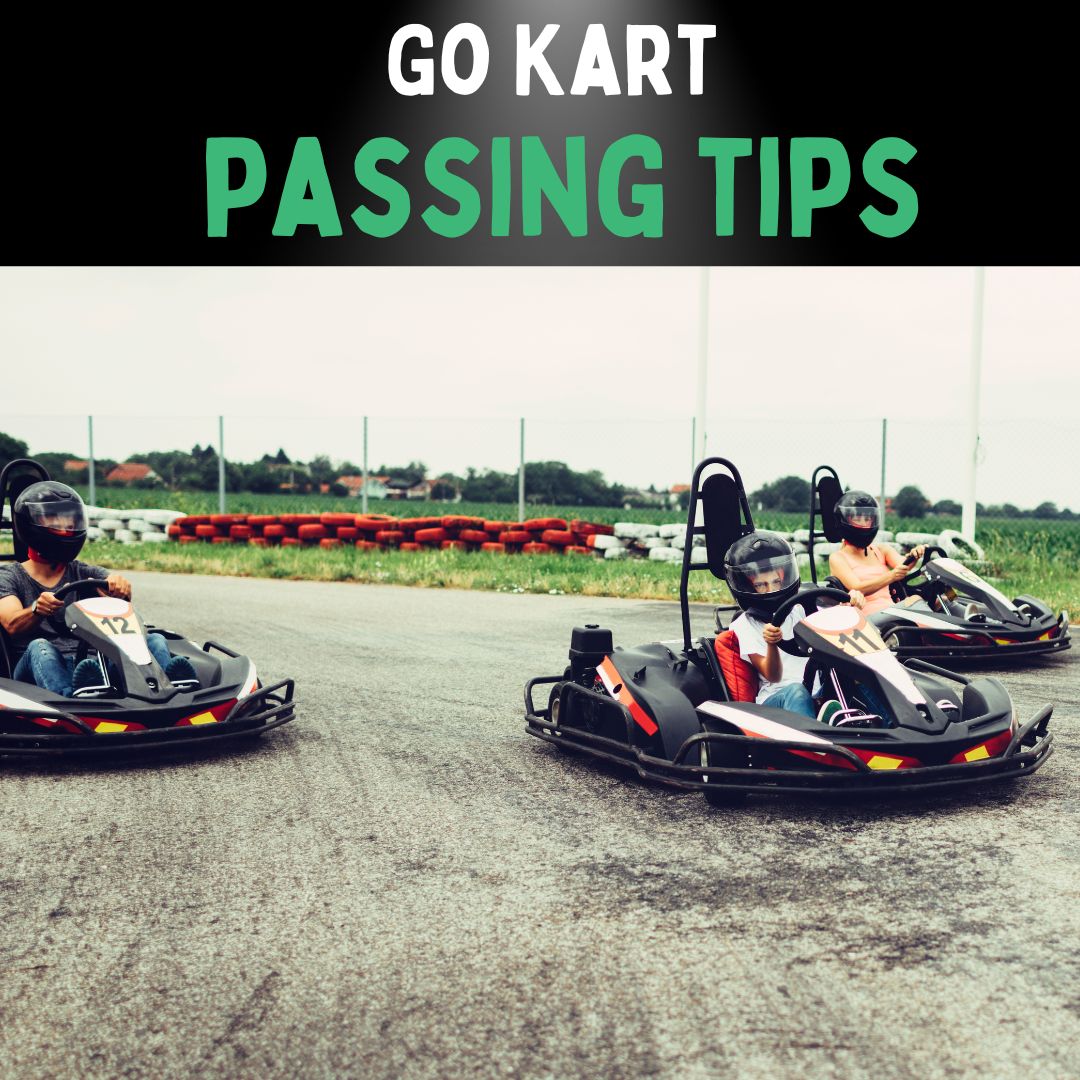
Updated: 28.4.25
Go-kart racing isn't just about raw speed—it's a thrilling combination of strategy, skill, and precision. Mastering overtaking is crucial if you want to move from being a good driver to a great one.
In this guide, we’ll break down the essential techniques and racing etiquette to help you overtake like a pro and sharpen your edge on the track.
Fundamental Techniques for Overtaking
Getting Parallel to Your Opponent
First, position your kart level with your opponent. Timing is everything—stay close without forcing a risky move.
Braking Slightly Later into a Turn
Controlled late braking lets you carry more momentum into corners. Just a fraction later on the brakes than your opponent can make all the difference.
Easing Off the Throttle and Holding the Inside Line
Overtaking isn't always about aggressive speed. Sometimes, easing off slightly and maintaining a tight inside line gives you the perfect trajectory to make your move stick.
Understanding Kart Dynamics and Weight Transfer
When you brake, weight moves forward; when you accelerate, it shifts back. Learning how to manage weight transfer gives you better grip, sharper handling, and the upper hand when overtaking under pressure.
Advanced Overtaking Methods
Reducing Wind Resistance: Drafting
Stay tucked behind another kart to reduce drag, then slingshot past when the moment is right. Drafting saves energy and gives you the acceleration boost needed to overtake cleanly.
Building Speed on the Straightaways
Straight sections are golden opportunities. Use them to gain maximum speed before setting up your pass into the next corner.
Track Knowledge and Racing Lines
Memorising the track’s twists and turns helps you spot vulnerable spots in an opponent’s line. Master the best racing lines to open up more overtaking windows.
Training and Practice
Consistent Practice
Like any skill, overtaking needs repetition. Hit the track regularly to refine your timing, judgement, and execution under race conditions.
Essential Overtaking Drills
Practice side-by-side driving, late braking drills, and inside-line overtakes to sharpen your ability to react in real-world scenarios.
Overtaking Rules and Etiquette
Respectful and Safe Passing
Always leave space. Dive-bombing into corners and squeezing rivals against barriers is dangerous and unsportsmanlike.
Simulator Training
Race simulators are a safe environment to explore different overtaking scenarios, helping you gain experience without risk.
Flag Rules You Must Know
Learn and respect track flags: no overtaking under yellow flags (caution), but go for it once the green flag waves again. These rules exist to protect everyone on the track.
Common Overtaking Mistakes to Avoid
Not Planning Ahead
Look several corners ahead to anticipate where overtaking opportunities will appear.
Overcautious Braking
Too soft on the brakes? You’ll lose the chance to dive up the inside and pass.
Turning in Too Early
Early turn-ins wreck your corner exit and make you vulnerable to being re-passed.
Overaggressive Behaviour
Controlled aggression wins races. Wild moves cause crashes—and penalties.
Misjudging Opponent’s Speed
Predict how your opponent approaches corners and straights. Mistiming your move risks side-to-side contact or undercut failures.
Mastering Braking for Overtaking
"Slow In, Fast Out" Rule
Brake early enough to control your kart, then power out of corners faster than your opponent for a decisive pass.
Training Your Braking Skills
Practice smooth, progressive braking to maximise grip and minimise errors under pressure.
Coordinating Brake and Throttle Inputs
Sharp overtakes need balanced braking and throttle control. Nailing this coordination lets you attack without losing momentum.
How to Avoid Collisions While Passing
Safe Distances and Drafting
Stay close enough to draft—but not so close that a slight misstep leads to disaster.
Anticipating and Reading the Race
Keep scanning ahead to predict others' moves and be ready to react smoothly and safely.
Respect Track Etiquette
Uphold racing courtesy by making safe, predictable moves and avoiding reckless passes.
Conclusion
Overtaking like a pro in go-kart racing is about sharp skills, smart thinking, and respectful racing. Practice the techniques in this guide, stay disciplined, and remember—clean overtakes are the mark of true racing excellence.
Own the track. Respect the race. Overtake with style!







Share:
Go Kart Racing Tactics for Kids (Updated 2025)
Why It's Important to Visualise the Go Kart Track